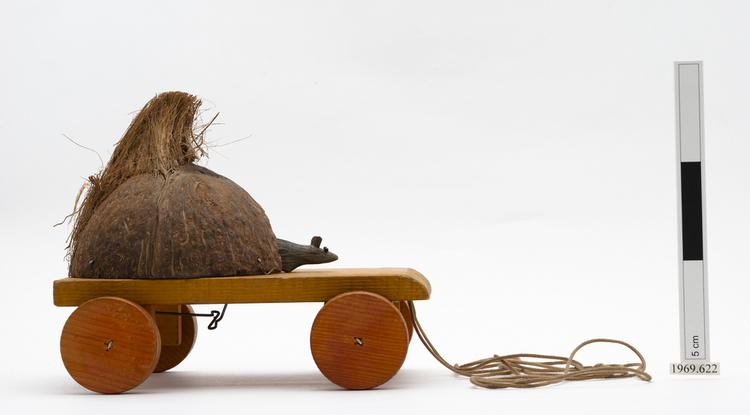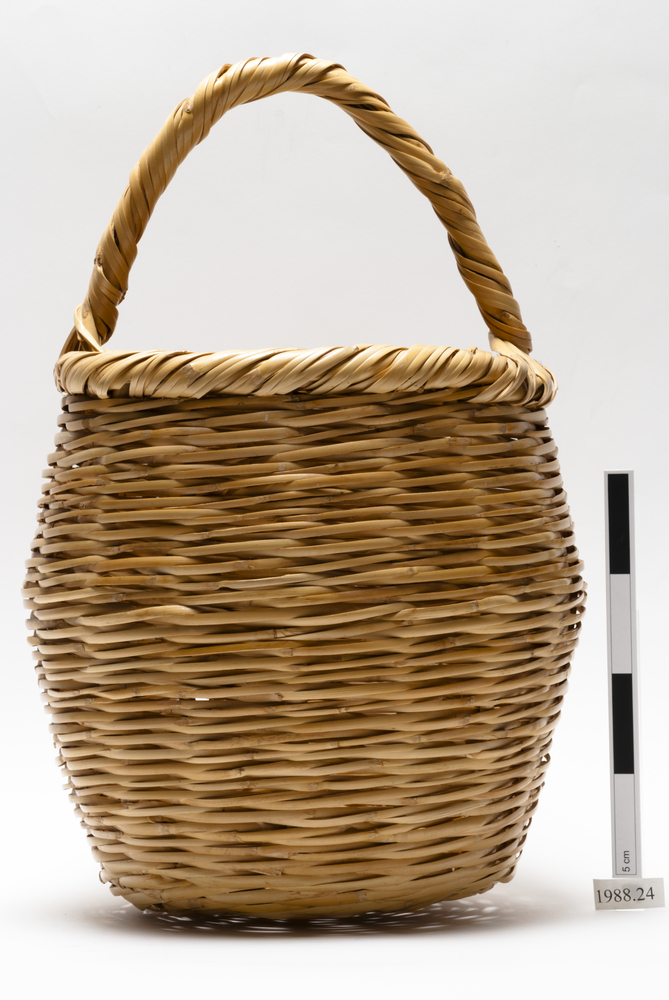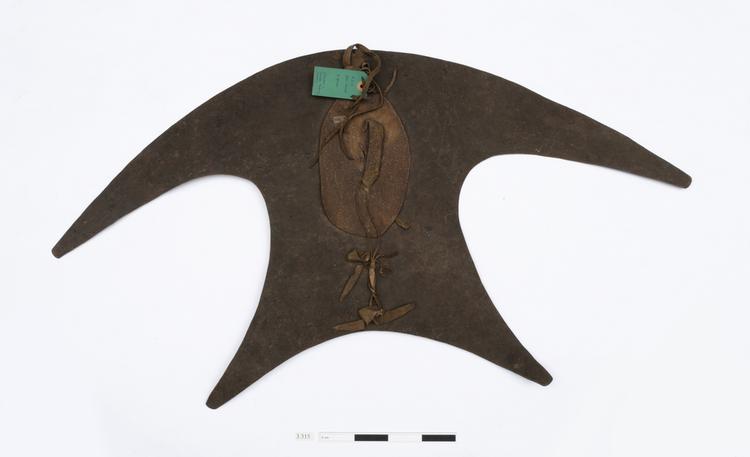Sierra Leonean country cloth, of the composite kpokpo style. This cloth is made of 8 strips, each 210mm wide and woven individually on a tripod loom. When sewn together they produce a larger overall pattern.
The patterning is predominantly black and natural coloured cotton bands of equal width, though one of the outer strips has blue instead of black alternating bands. In some areas bleached rather than natural cotton has been used. A central panel has elongated diamond and zig zag motifs, using black and yellow stranded cotton on a black and yellow striped ground. The middle strip is worked in black cotton on a bleached ground. Two red bands (framed by black bands) flank the centre panel. All this patterning is worked in discontinuous supplementary weft. The plyed warp ends are unfinished.
An example of Sierra Leonean country cloth, of the kpokpo type. These thick heavy textiles were traditionally made from locally grown cotton, collected by women and spun into thread and dyed by men. Men were also the main weavers, and would have used a tripod loom to create a series of strips which were then sewn together edge to edge to create a larger cloth with a more complex pattern. County cloths have been recorded as being used as trade items, worn as part of elite ceremonial dress, as well as burial shrouds (plain white).






